Imagine you have a toy that everyone wants to play with. Instead of you having to tell people, “Hey, this toy is great! You should play with it,” the toy is so fun that people just see it, want to try it, and start playing without any extra effort from you.
Some companies create products that are so valuable and easy to use that they don’t need ads or sales pitches, people naturally adopt and share them. This concept, called Product-Led Growth (PLG), allows the product to “sell itself.” For startups and small businesses, PLG minimizes sales costs while highlighting product value and driving efficient growth. It’s a game-changing strategy for modern businesses.
It’s a strategy that’s quickly gaining momentum. In fact, 53% of the customers would like to buy a product without any sales or direct interaction. Many startups have adopted PLG and seen their customer acquisition costs drop. Today, we’ll dive into how brands like Zoom and Dropbox mastered PLG and turned their products into viral growth engines. Curious? Let’s explore!
What is Product-Led Growth? A Quick Refresher
Product-led growth (PLG) is a business strategy in which the product drives customer acquisition, engagement, and retention. Instead of relying on sales teams or marketing campaigns, PLG focuses on delivering value directly through the product experience.
Users experience the product’s benefits firsthand and adopt it as a natural result of its usability and performance. According to GainSight, 91% of companies using PLG plan to increase their investment, with 47% aiming to double it.
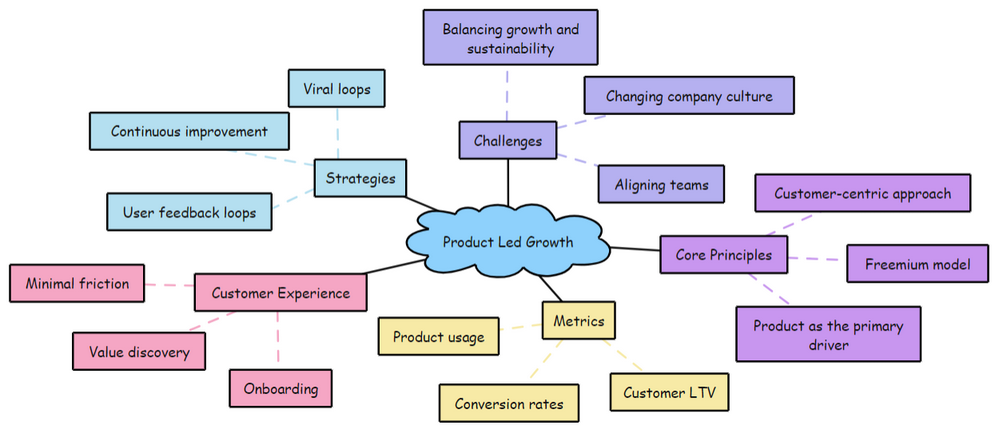
Why PLG Matters in a Modern Business?
Many successful brands demonstrate product-led growth examples by embedding value right into their products, creating loyal customer bases.
- Puts the product at the center of success: PLG transforms the product into a growth engine by addressing customer needs intuitively. For example, tools like Slack and Zoom make it easy for users to onboard, explore, and understand their value without requiring external persuasion.
- Minimizes reliance on outdated tactics: Traditional sales and marketing strategies often involve lengthy cycles and generic pitches. In contrast, PLG relies on hands-on interaction, where users experience benefits firsthand.
- Drives word-of-mouth referrals: Products that solve problems exceptionally well encourage users to share them organically
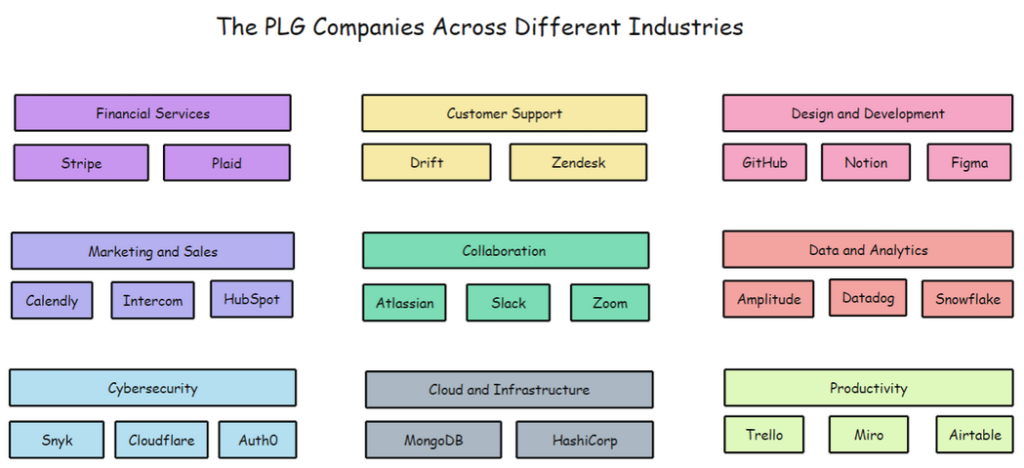
10 Real-Life Product-Led Growth Examples Driving Success
Want to see how leading brands are growing with their products?
In this section, we’ll explore 12 product-led growth examples that show how companies use their products to win over customers and grow fast.
Slack: Simplifying Team Communication
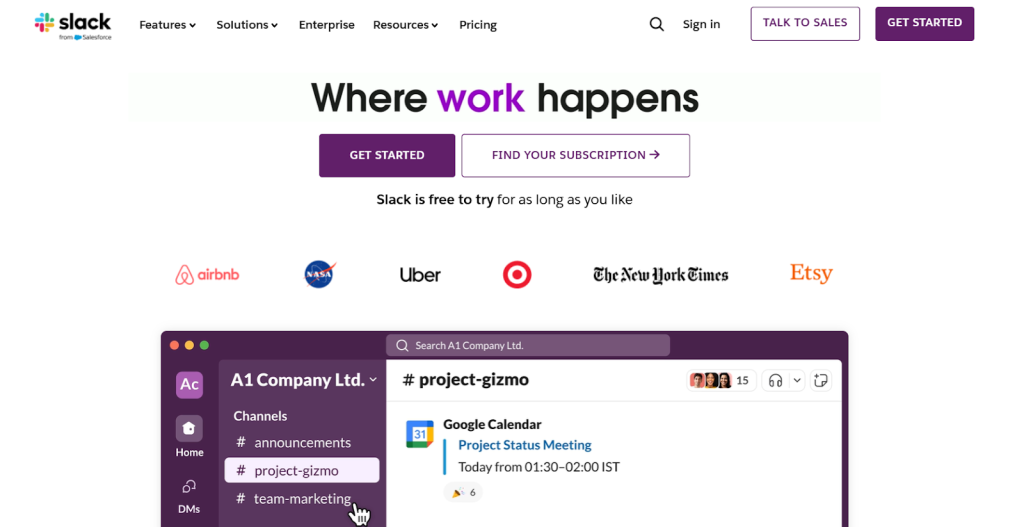
Slack is a collaboration and communication platform designed to streamline team workflows. Launched in 2013, it quickly became a go-to tool for both small businesses and large enterprises, changing how teams communicate and collaborate.
PLG Strategy: Slack’s product-led growth strategy offers a free version with essential features. This allows teams to experience the value firsthand before upgrading to paid plans. This strategy has been particularly effective for small businesses and startups, as it provides a low-cost entry point for professional communication tools. Its focus on easy team collaboration and scalability fosters organic growth.
Target Audience
- Teams
- Small Businesses
- Enterprises
Viral Loop Features
- Invite friends to join teams
- Easy sharing of channels
- Integration with other tools (Google Drive, Zoom, etc.)
- Referral programs to encourage sign-ups
Onboarding Features
- Simple setup and onboarding flow
- Walkthrough guides and tutorials
- Interactive product tours
- Instant access to basic features (without requiring a sales team)
Partnerships or Integrations
- Google Workspace
- Microsoft Teams
- Dropbox
- Trello
- Zoom
- Salesforce
Key Results & Impacts
- 38.8 million daily active users and 65 million monthly active users
- 33.95% market share in the communication category
- Estimated $4.22 billion in revenue in 2024
- Over 750,000 organizations use Slack, including 77% of Fortune 100 companies
Dropbox: Viral Growth Through Referrals
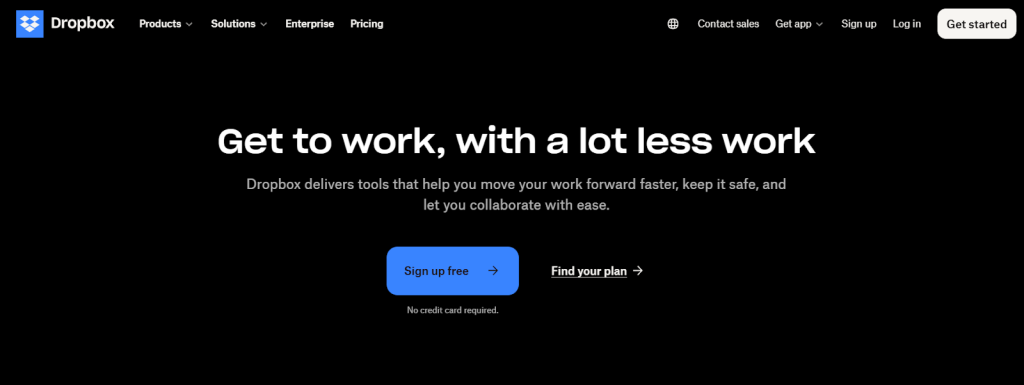
Dropbox is a cloud-based file storage and collaboration platform founded in 2007. It simplifies file sharing and syncing across devices, making it a top choice for individuals and teams to store, access, and collaborate on files.
PLG Strategy: Dropbox uses a freemium model, offering free storage with the option to upgrade for more space and features. Its simple interface and easy sharing capabilities drive organic growth as users invite others. Small businesses benefit significantly from Dropbox’s simple interface and referral program, which allows them to expand their storage needs without upfront costs.
Target Audience
- Individuals
- Small Businesses
- Enterprises
Viral Loop Features
- Referral program offering free storage
- Easy file-sharing and collaboration tools
- Invite friends to unlock additional space
- Public folder sharing
Onboarding Features
- Simple sign-up process
- Automatic file syncing across devices
- Quick setup guides
- Product walkthrough for new users
Key Results & Impact
- Over 700 million registered users
- Estimated $2.5 billion in revenue in 2024
- 500,000+ paying customers
- Over 20 million daily active users
- Acquired by Dropbox Paper for enhanced team collaboration
Pro Tips & Takeaways
- Incentivize sharing: Referral programs encourage users to spread the word, fueling growth.
- Keep it simple: A minimalistic, user-friendly interface can significantly improve user experience.
- Offer tiered pricing: Provide value for free users while incentivizing upgrades for more advanced features.
Zoom: Democratizing Video Conferencing
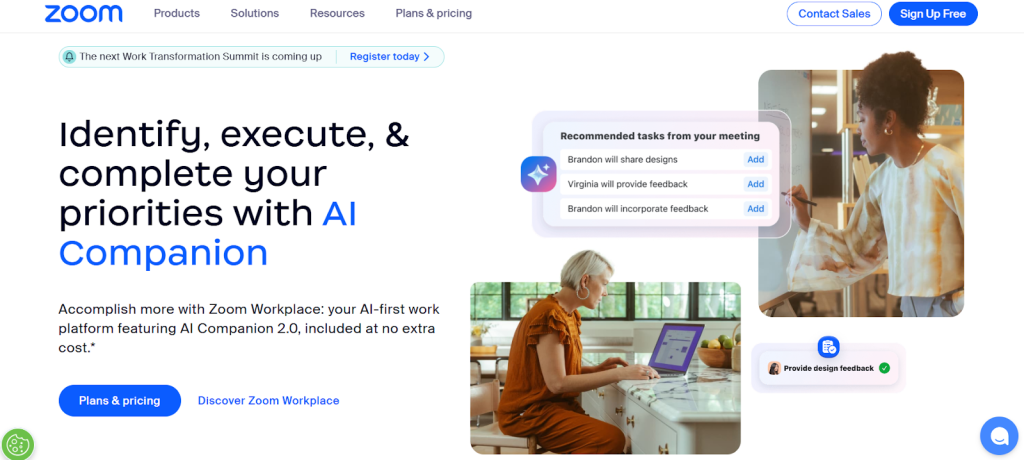
Zoom is a video conferencing tool founded in 2011, designed to make virtual meetings simple and effective. It has grown rapidly, becoming one of the most popular platforms for remote communication and collaboration worldwide.
PLG Strategy: Zoom’s product-led growth strategy relies on offering a free version of its video conferencing tool with essential features, allowing users to experience its value. Upgrading to paid versions offers added features and larger meeting capacities. For startups and small businesses, Zoom’s free version provides a cost-effective solution to maintain professional communication without heavy investments.
Target Audience
- Small Businesses
- Enterprises
- Educators
Viral Loop Features
- Invite unlimited participants for free (up to 40 minutes per meeting)
- Referral program for inviting others
- Meeting integrations with calendars and email automation
- Recording and sharing meetings for later use
Onboarding Features
- Instant sign-up with Google or SSO
- Guided meeting setup
- One-click scheduling for meetings
- Simple interface with tooltips and guides for first-time users
Partnerships or Integrations
- Slack
- Google Calendar
- Microsoft Teams
- Dropbox
- Salesforce
Key Results & Impact
- Over 300 million daily meeting participants
- Estimated $5.5 billion in revenue in 2024
- Over 600,000 customers including 156,000+ enterprises
Pro Tips & Takeaways
- Free version drives adoption: A robust free version can attract users who eventually upgrade.
- Focus on simplicity: Keep the user interface straightforward for seamless meeting experiences.
- Integrate with widely-used tools: Zoom’s integration with tools like Slack and Google Calendar makes scheduling easy.
Canva: Empowering Non-Designers
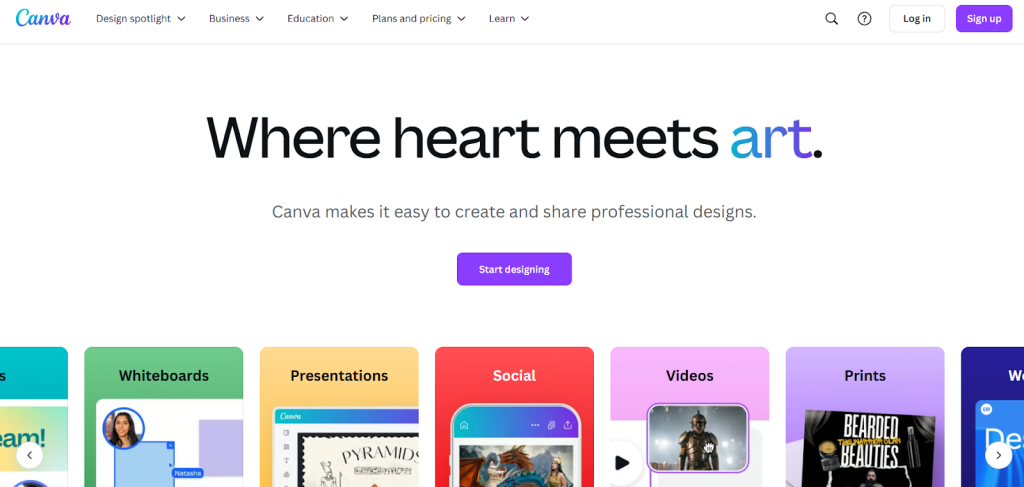
Canva is an online graphic design platform founded in 2012, aimed at democratizing design. It allows users to create high-quality visuals easily, without needing advanced design skills, making it a popular choice for both individuals and businesses.
PLG Strategy: Canva’s product-led growth strategy centers around its freemium model, offering a free version with essential design tools. The platform encourages users to upgrade to premium plans for advanced features like brand kits, templates, and higher-quality export options.
Target Audience
- Individuals
- Small Businesses
- Marketers
Viral Loop Features
- Easy sharing of designs via links
- Invite friends for team collaboration
- Referral program offering free credits for premium features
- Pre-made templates for quick use
Onboarding Features
- Drag-and-drop editor for quick design
- Step-by-step tutorials for beginners
- Ready-to-use templates for various projects
- Easy sign-up with Google or Facebook
Partnerships or Integrations
- Google Drive
- Dropbox
- Mailchimp
- HubSpot
Key Results & Impact
- Over 100 million active users
- Estimated $5 billion in revenue in 2024
- Used by more than 3 million teams
- Available in over 190 countries
- Raised $300 million in Series C funding
Pro Tips & Takeaways
- Offer value for free: A strong freemium model attracts users who eventually upgrade for more advanced features.
- Templates simplify design: Pre-made templates allow users to get started quickly, fostering engagement.
- Promote collaboration: Encouraging team collaboration boosts retention and usage.
HubSpot: PLG Meets Marketing Automation
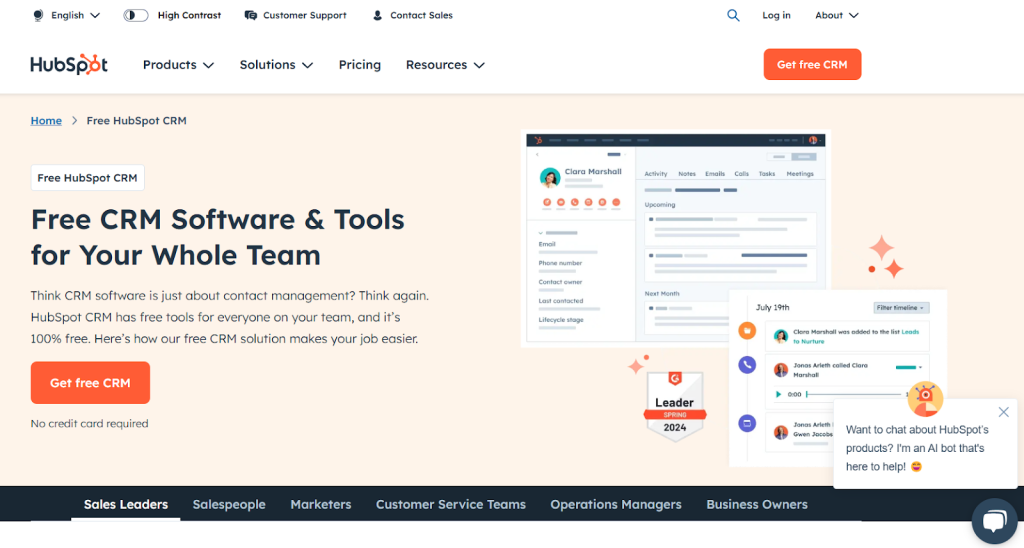
HubSpot, founded in 2006, is an inbound marketing, sales, and customer service software platform. It helps businesses grow by providing tools for content management, customer relationship management (CRM), and marketing automation.
PLG Strategy: HubSpot’s product-led growth strategy focuses on offering free tools that attract users to its platform. As users grow and need more advanced features, HubSpot encourages upgrades to its premium plans.
Target Audience
- Small and Medium Businesses
- Marketing Teams
- Sales Teams
Viral Loop Features
- Free CRM and tools for lead management
- Referral program offering free tools for inviting others
- Educational resources like HubSpot Academy
- Easy-to-use templates for inbound marketing and sales campaigns
Onboarding Features
- Interactive onboarding for new users
- Step-by-step tutorials to guide users through the platform
- Simple setup for marketing campaigns and sales pipelines
- Integrated knowledge base for quick help and troubleshooting
Partnerships or Integrations
- Salesforce
- Slack
- Google Workspace
- Shopify
- Zapier
Key Results & Impact
- Over 100,000 customers worldwide
- Revenue of $2.5 billion in 2024
- Used by 30,000+ companies in over 90 countries
- Increased customer retention by 27% through CRM and automation features
Pro Tips & Takeaways
- Free tools drive user adoption: Offering free tools increases awareness and attracts users.
- Education is key: HubSpot’s educational resources, such as HubSpot Academy, help users unlock the platform’s potential.
- Continuous user support: Providing easy-to-access support and guides enhances user experience and retention.
Figma: Real-Time Collaborative Design
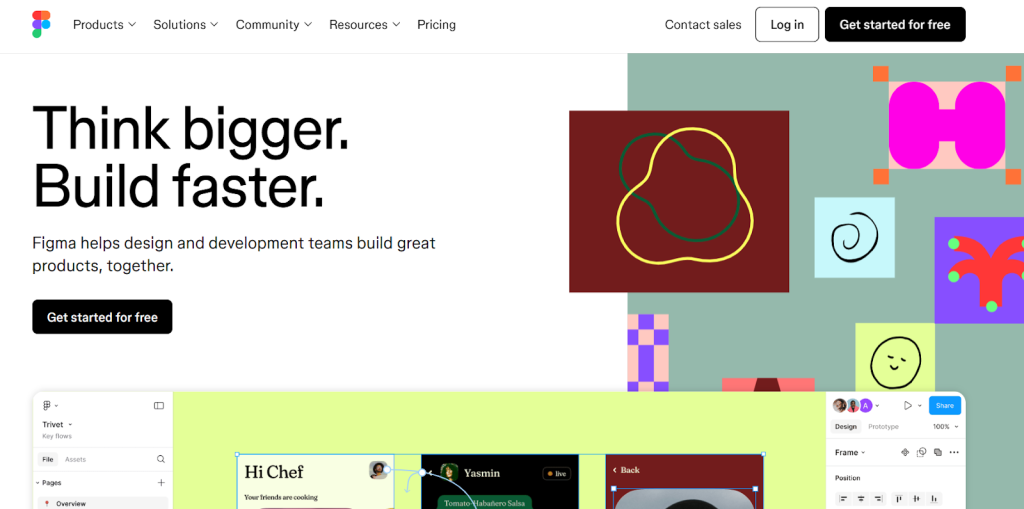
Figma, founded in 2012, is a web-based design tool that enables real-time collaboration on UI/UX design. It allows designers and teams to work together seamlessly, regardless of their location, making it a popular choice for design professionals and businesses.
PLG Strategy: Figma’s product-led growth strategy centers on a freemium model, where users can access essential design tools for free. As teams grow and need more advanced features, they are encouraged to upgrade to premium plans.
Target Audience
- Designers
- Design Teams
- Product Teams
Viral Loop Features
- Real-time collaboration on design files
- Free team and project sharing for seamless collaboration
- Easy invite and access for collaborators
- Sharing design files via links or embed options
Onboarding Features
- Intuitive drag-and-drop interface
- Interactive onboarding tutorials and guides
- Simple team setup and file sharing
- Built-in template library for quick design starts
Partnerships or Integrations
- Slack
- Jira
- Google Drive
- Zeplin
- Notion
Key Results & Impact
- Over 4 million active users
- Used by top companies like Microsoft, Uber, and Airbnb
- Revenue exceeding $200 million in 2024
- Customer retention rate of 95%
- Highly valued by design teams for its collaborative features
Pro Tips & Takeaways
- Collaboration drives user engagement: Figma’s real-time design collaboration tools encourage team usage and frequent interaction.
- Offer essential features for free: Figma’s free version attracts new users who later upgrade for more advanced features.
- Simplify the user experience: Figma’s intuitive interface and helpful tutorials make onboarding easy for new users.
Calendly: Streamlining Scheduling for Professionals
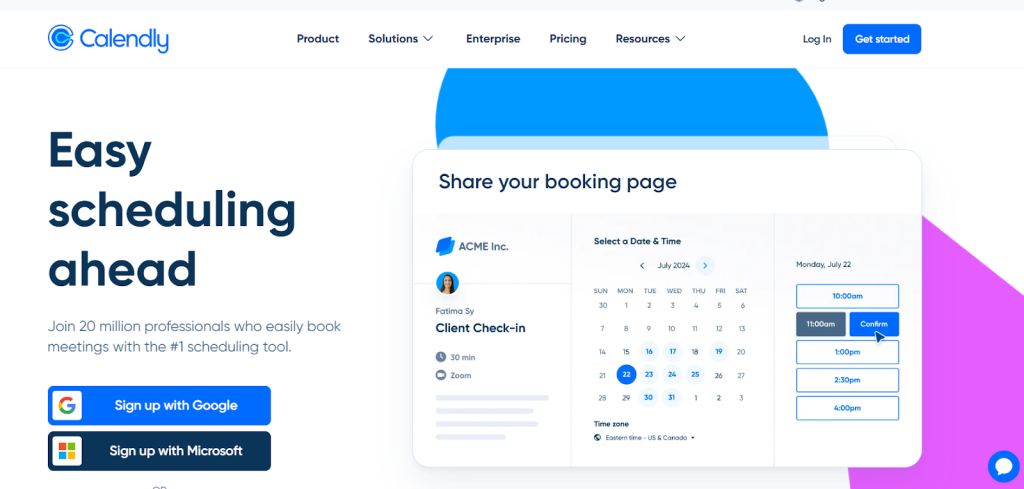
Calendly, founded in 2013, is a scheduling tool designed to simplify meeting coordination. It allows users to set their availability, share scheduling links, and automatically handle time zone differences, eliminating the back-and-forth of setting up appointments.
PLG Strategy: Calendly’s PLG strategy focuses on providing a free version that covers basic scheduling needs. Premium versions with additional features like team scheduling, calendar integrations, and analytics drive users to upgrade as their needs grow.
Target Audience
- Professionals
- Sales Teams
- HR Teams
Viral Loop Features
- Easy scheduling with link sharing
- Integration with Google, Outlook, and Office 365 calendars
- Team scheduling for collaborative bookings
- Personalized reminders to reduce no-shows
Onboarding Features
- Simple sign-up with Google or Microsoft account
- Step-by-step setup for availability and meeting preferences
- Quick integration with calendars for easy scheduling
- User-friendly interface with clear instructions
Partnerships or Integrations
- Zoom
- Google Calendar
- Outlook
- Salesforce
- Microsoft Teams
Key Results & Impact
- Over 10 million users
- Revenue of $70 million in 2024
- Used by over 50,000 companies globally
- Reduced scheduling time by 90% for users
Pro Tips & Takeaways
- Offer a solid free version: A free version can attract a broad user base and encourage paid upgrades.
- Integrate with popular tools: Connecting with calendars and communication platforms increases product utility.
- Simplify the user experience: Make setup and scheduling as easy as possible to retain users.
Notion: Redefining Productivity With Simplicity
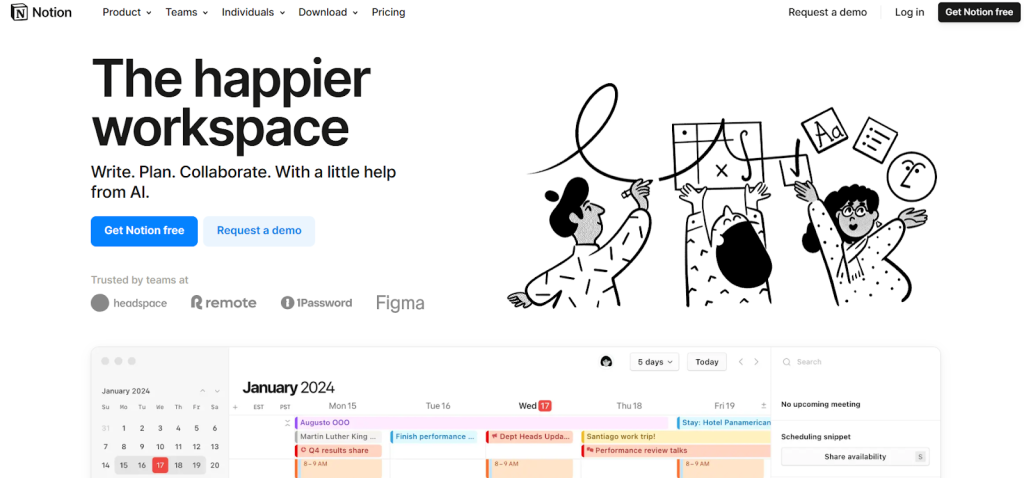
Notion, founded in 2013, is an all-in-one workspace for note-taking, task management, and collaboration. It allows users to organize projects, documents, and databases in a flexible, customizable environment that adapts to different workflows.
PLG Strategy: Notion’s PLG strategy focuses on offering a free version with essential features for individuals and small teams. As users expand and require more advanced features like team collaboration tools and increased storage, they are encouraged to upgrade to premium plans.
Target Audience
- Individuals
- Small Teams
- Enterprises
Viral Loop Features
- Customizable templates for personal and team use
- Sharing capabilities for documents and workspaces
- Real-time collaboration on pages and databases
- Invite-based user growth through free plan access
Onboarding Features
- Simple sign-up process with Google or Apple login
- Interactive tutorials to help users get started
- Pre-built templates to jumpstart the organization
- Easy drag-and-drop interface for customization
Partnerships or Integrations
- Google Drive
- Slack
- Trello
- Zapier
- Figma
Key Results & Impact
- Over 20 million users
- Used by 30,000+ organizations
- Revenue of $100 million in 2024
- Productivity boost for teams by 40% through better collaboration
Pro Tips & Takeaways
- Freemium model increases adoption: Offering free, high-value features encourages users to explore the product.
- Templates create immediate value: Pre-built templates help users get started quickly and easily.
- Collaboration tools drive user engagement: Real-time collaboration features help retain users and boost productivity.
Grammarly: Making Writing Assistance Accessible
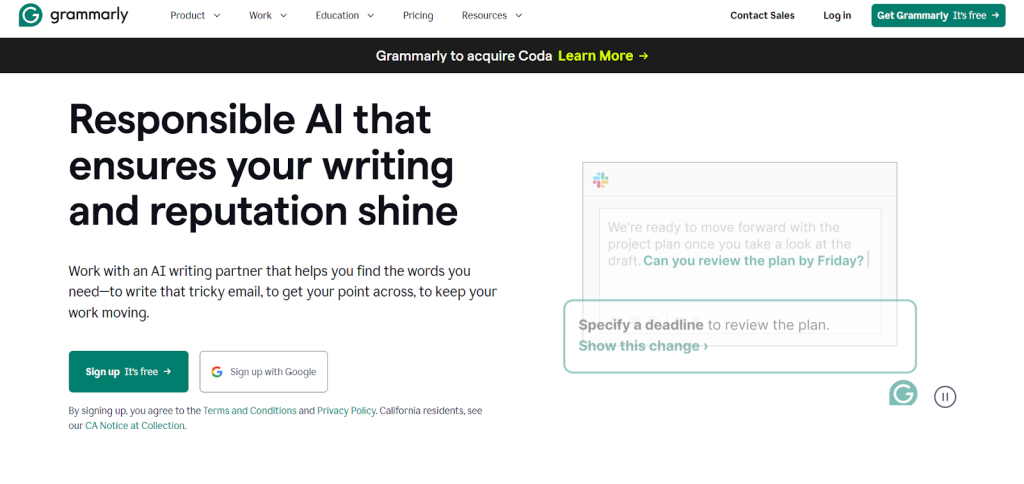
Grammarly, founded in 2009, is an AI-powered writing assistant that helps users with grammar, spelling, punctuation, and style suggestions. It simplifies writing for individuals and businesses by improving clarity and readability in real-time.
PLG Strategy: Grammarly’s product-led growth strategy revolves around a freemium model. It offers essential writing checks for free, with premium subscriptions unlocking advanced grammar checks, plagiarism detection, and style enhancements.
Target Audience
- Writers
- Students
- Professionals
Viral Loop Features
- Referral program for premium subscriptions
- Easy integration with browsers and word processors
- Instant suggestions for grammar and style corrections
- Sharing of documents for real-time feedback
Onboarding Features
- Simple sign-up with Google or Facebook
- Step-by-step guidance on using features
- Automatic grammar checks across platforms
- Real-time suggestions on text input
Partnerships or Integrations
- Microsoft Office
- Google Docs
- Slack
- Outlook
- Zoom
Key Results & Impact
- Over 30 million daily active users
- Estimated $700 million in revenue in 2024
- Used by over 6,000 businesses globally
- Raised $200 million in Series F funding
Pro Tips & Takeaways
- Offer a robust free version: A valuable free version encourages users to upgrade for more features.
- Simplify the user experience: Real-time suggestions improve engagement and user retention.
- Integrate across platforms: Broad integrations increase user accessibility and daily engagement.
Airtable: Merging Spreadsheets and Databases
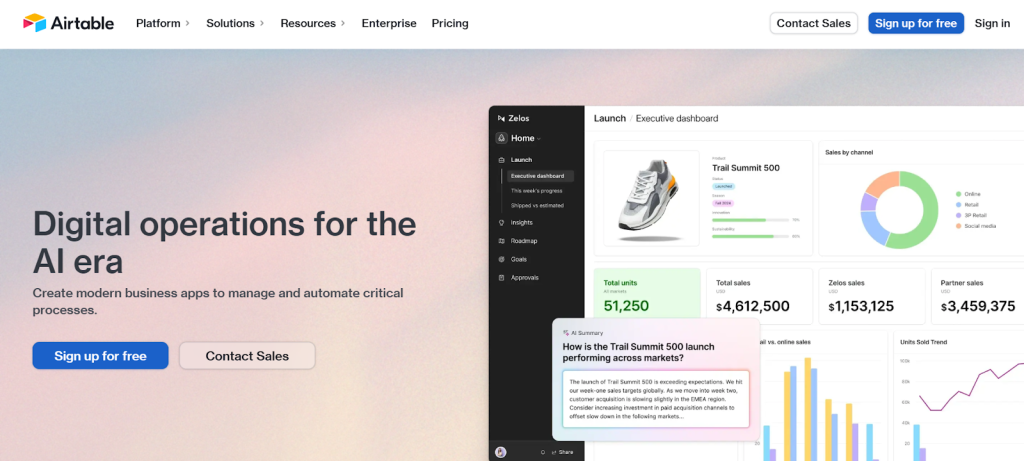
Airtable is a cloud-based project management and collaboration tool launched in 2012. It combines the simplicity of a spreadsheet with the power of a database, allowing teams to organize and collaborate on projects effectively.
PLG Strategy: Airtable’s product-led growth strategy uses a freemium model, offering essential features for free. It encourages users to unlock more advanced tools, such as automations and custom views, by upgrading to paid plans.
Target Audience
- Small Businesses
- Teams and Departments
- Project Managers
Viral Loop Features
- Simple collaboration and sharing features
- Invite team members for real-time updates
- Pre-built templates for various workflows
- Create public views to share with external collaborators
Onboarding Features
- Easy-to-follow tutorials and guides
- Drag-and-drop functionality
- Instant sign-up with Google or SSO
- Quick-start templates for beginners
Partnerships or Integrations
- Slack
- Google Workspace
- Dropbox
- Trello
- Salesforce
Key Results & Impact
- Over 300,000 customers globally
- Estimated $12 million in revenue in 2024
- Used by major companies like Netflix, Shopify, and NASA
- Raised $185 million in Series D funding
Pro Tips & Takeaways
- Focus on collaboration: Airtable’s collaborative features make it a go-to solution for teams.
- Simplify workflows with templates: Pre-built templates help users quickly adopt the tool.
- Use integrations: Airtable’s integrations with popular tools boost its versatility.
Conclusion
Product-led growth (PLG) is a powerful strategy for modern businesses. By focusing on the product itself, companies can drive growth without heavy reliance on traditional sales and marketing. For startups and small businesses, PLG levels the playing field by allowing them to compete with larger enterprises through affordable, scalable solutions that prioritize user value.
PLG allows businesses to attract users with a valuable product, turning them into long-term customers. With easy onboarding, viral features, and collaboration, users quickly see the product’s value. As seen in real-life examples like Slack, Dropbox, and Zoom, PLG helps brands grow organically and scale efficiently. The key takeaway is that by prioritizing product value, businesses can enhance customer satisfaction and retention, allowing the product to be the main driver of success.